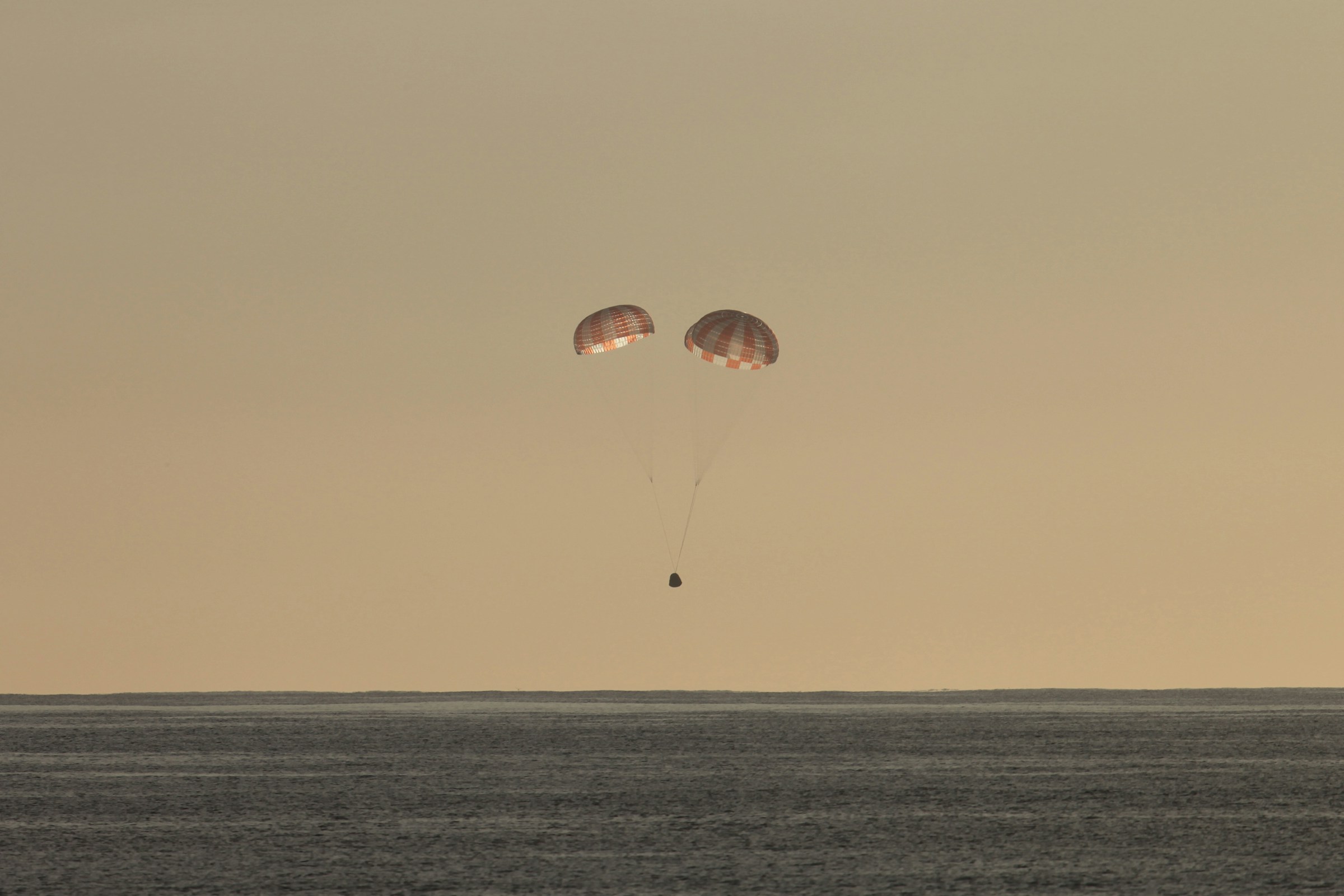To ensure the highest chance of our CanSat not taking damage and having a smooth landing, we have opted for our CanSat to descend at a terminal speed of 8.0m/s. Our final parachute design will be a flat-pack hexagon design. We have chosen this design for a few reasons. Firstly, it is simple and relatively easy to make which allows us to focus our attention on more vital parts of the mission. Even though it is easy to make, it has a relatively high drag-coefficient which, after testing, we found to be 0.8. This is useful since our descent speed is quite low, a high drag coefficient allows us to achieve that speed with less material\area, a vital advantage when dealing with space/weight limitations.
We began to entertain the possibility of doing a parafoil design. We planned to have the parafoil cords attached to two servo motors which would have allowed it to steer on command. However after some brainstorming/discussion, we decided against parafoil and stuck with our flat-pack design as research showed it would be a big task and seeing as our secondary mission wouldn’t benefit much from it, there was no point.
We used the drag and weight formulae to calculate the required area of the parachute:

Where m is the mass of the Cansat, g is the gravitational constant, p is the local air density, v is the velocity and Cd is the drag coefficient.
Assume the mass of the CanSat is 0.35kg, p is 1.225g\m3 , the velocity is 8.5m/s and the drag coefficient is 0.8. The terminal velocity occurs when the weight force is equal to the drag force so we can set the equations equal to each other and solve for A

Then plug in the assumed values frome before and get:

Therefore our hexagon has an of area 0.0970m2
We can use the area of a hexagon formula to calculate the side length:

Plug in A = 0.0970:

So after calculations, our parachute will be a hexagon with side 19.5cm or 195mm. To make the making easier, we split up the parachute into 6 equilateral triangles of 19.5cm or 195mm.
The blueprint:

Materials
For our parachute material, we have gone for Nylon ripstop fabric. This is for a few reasons. Firstly it’s easy to obtain and customisable so we can make it into our own design easily. As it is woven with coarse, strong warp and filling yarns the tears don’t spread decreasing the chance of failure. The major reason we chose this material is because it is waterproof, tear resistant and has zero porosity which reduces the chance the actual CanSat gets extremely wet. Finally, it also has a high strength to weight ratio which favourable as in this competition every gram matters.
For our parachute cord material, we chose a paracord made from Nylon with a diameter of 4mm. Due to its 11-threaded core it can withstand 3000+ Newtons , which is plenty enough for the CanSat.
Recovery System
To ensure the highest chance our CanSat is recoverable, we have opted for two systems in place. Firstly we will use GPS to know exactly where our CanSat is, this almost guarantees the CanSat doesn’t get lost and has the added advantage we can track its flight path which is useful during testing. However, just in-case the GPS fails or for some reason the data is inaccurate, we have made our parachute and the cord a fluorescent orange colour, so it does not blend into the nature/sky, again with the added benefit of being able to easily track our flight path


Leave a Reply